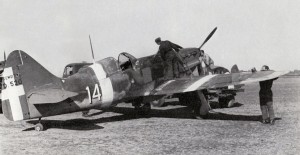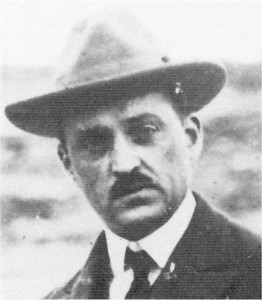Published on July 5, 2012
On this day in aviation history in the year 1979, the French aircraft designer Émile Dewoitine passed away in Toulouse. He was 87 years old. Dewoitine’s best known aircraft design is the D.520, considered to be the finest front line fighter aircraft of the French Armée de l’Air in 1940. Dewoitine’s designs ranged from trainers to bombers and fighters — an incredibly diverse legacy that makes him one of the leaders in the history of French aviation. Yet Émile Dewoitine was also a Nazi collaborator who fled France at the end of World War II and went into hiding.
Born in Crépy en Laonnais, a town of less than 1,800 inhabitants in Picardie, France, not far from the Belgian border, Dewoitine was interested in aviation from a young age. Coming to the French military, he focused on becoming a pilot and would solo in an airplane in 1911, thus joining the small group of pioneers in the earliest days of aviation. At the beginning of World War I in 1914, he was sent to Russia to manage the Anatra d’Odessa et de Simféropol factories where Voisin bombers were built on license. With the onset of the Russian revolution in 1917, he returned to France and soon afterward joined the newly founded French aviation company Latécoère.

With his management experience abroad, now coupled with his experiences in a French company, soon he created his own French aviation company to sell his designs. Despite some sales, he shuttered the company in 1927 and moved to Switzerland. There, he launched anew and in 1928 designed the Dewoitine D.27, a two-place, high wing monoplane training aircraft. In 1931, he delivered the first of 66 aircraft to the Swiss Air Force. With a successful contract in place, Dewoitine again returned to France and opened up a new company, the Société Aéronautique Française – Avions Dewoitine. His newer designs were favored by the French military and soon he was producing both fighters and bombers for the Armée de l’Air.
The Armée de l’Air would order hundreds of his new Dewoitine D.520, a high performance, all-metal single seat fighter plane powered by the Hispano-Suiza 12Y. Before the D.520’s first flight, Dewoitine’s company was nationalized in 1937 when, seeing war clouds on the horizon, the French government placed it within one of the country’s new design conglomerates. Nonetheless, the D.520 would fly in 1938. Only a single squadron was equipped with the fighters when the Germans invaded France in 1940. The few D.520s available performed well against the Me-109s that spearheaded the Luftwaffe’s fighter force. The Battle of France was lost in less than two months and France was forced to sign an armistice with Germany, putting the new Vichy French Government under Axis control with limited autonomy.
Émile Dewoitine moved to the United States where he attempted to set up a company in late 1940, hoping to gain the aid of Henry Ford and General Hap Arnold to provide fighter aircraft to the US Army Air Corps. However, he returned to France and the Vichy government charged him with treason for leaving his company. The Nazi government required that Dewoitine’s company service existing aircraft in the Vichy air force as well as build 550 more to aid in the Axis war effort. Agreeing to continue on, he was soon working with the German Arado aircraft firm. He was acquitted on all charges by the Vichy Government. A year later, the United States would finally enter the war.

In 1943, after many of the Vichy military forces joined the allies in North Africa, the bulk of their D.520s still within France were seized and shipped to other Axis powers. Some were deployed to Italy where they combated B-24 bombing raids at Napoli, while others went to Bulgaria where they were soon in direct combat with the USAAF’s 15th AF. Cooperating with the Nazis, Dewoitine chose to remain in France, building more aircraft and joining with Arado to develop the SIPA S.10, derived from the Arado Ar 96.
In 1944, facing the liberation of France and likely charges for having collaborated with the Nazis, Dewoitine fled to Spain. There, he worked on a D.520 derivative with Hispano Aviación, but also met with Argentine officials to discuss their aviation needs. Like many others facing possible charges in post-war Europe, he fled to Buenos Aires and disappeared. In 1948, Dewoitine was convicted in France in absentia as a collaborator. All of his property was confiscated and he was sentenced to 20 years of hard labor.

By then, however, he had taken up designing new aircraft for Argentina’s Peron Government, working under the auspices of that country’s main aircraft production arm, the Industria Aeronáutica Militar. In that capacity, he designed the I.Ae. 27 Pulqui I, the first jet aircraft produced in South America. Due to its many technical problems and limitations in its design, the Pulqui I was abandoned at the prototype phase when the Pulqui II, designed by former Focke Wulf engineer Kurt Tank, showed greater promise. The Pulqui I would be his last aircraft.
One More Bit of Aviation Trivia
In 1953, after a general amnesty, Émile Dewoitine would return to France. He would never take back up aeronautical design and engineering and instead would soon resettle in Patagonia where he established a large farm with 8,000 head of sheep. Some years later, he moved for a time to Switzerland before finally returning to settle in Toulouse. There, he would live out the remainder of his life in peace. Finally, at the age of 86, Émile Dewoitine passed away. In his life, he designed no fewer than 29 aircraft, but he will always be remembered for his classic French design, the D.520.


The IA.27 Pulqui was intended as an experimental aircraft, there were no “technical problems”. Dewoitine’s contribution was a very detailed drawing on cardboard. Since he had no expertise with jet engines, Stanley Hooker, who was in Argentina to sell Rolls Royce Merlins and Derwents, did the actual work. Hos comments on Dewoitine as follows: “He seemed preoccupied with making money….”
The IA.27 was a maneuverable aircraft, but it did not fulfill Dewoitine’s hopes. Its maximum speed was only 720 km/h (448 mph) while Dewoitine and his panagerists claimed it exceeded 498 mph (800 km/h). In fact, when reaching its maximum speed (720 km/h), the paint came off the wings. Furthermore, he was contracted to build the one prototype since the I.A..27 could neither mount armament on its wings or fuselage. Because of the position of the engine, it could not be modified as a trainer. Hence, despite Dewoitine’s (and Monsieurs Cuny’s and Danel’s) best hopes, there were never ay contracts to build the IA.27.
I think Dewoitine is a fascinating character. I’ve been trying to find out more about him, but probably he’s too controversial in France (because of his “collaboration” with the Germans) and therefore he has been somewhat set aside. Anybody know of a decent book about him?
Nice website, by the way.
Thanks,
L.